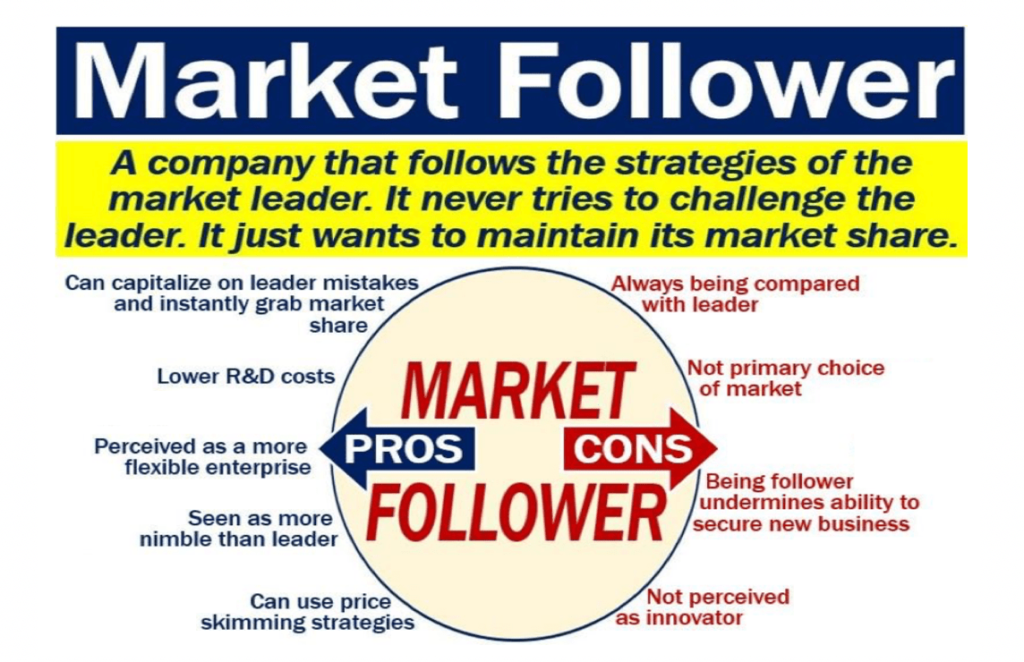Market-Follower Strategies
Theodore Levitt argues that a strategy of product imitation might be as profitable as a strategy of product innovation.
The innovator bears the expense of developing the new product, getting it into distribution, and informing and educating the market. The reward for all this work and risk is normally market leadership. However, another firm can come along and copy or improve on the new product. Although it may not overtake the leader, the follower can achieve high profits because it did not bear any of the innovation expense.
Many companies prefer to follow rather than challenge the market leader, especially in capital-intensive, homogeneous-product industries such as steel, fertilizers, and chemicals. The opportunities for product differentiation and image differentiation are low, service quality is comparable, and price sensitivity runs high. Short-run grabs for market share only provoke retaliation in such situations, so most firms present similar offers to buyers, usually by copying the leader, which keeps market shares stable.
Some followers are cloners, emulating the leader’s products, name, and packaging with slight variations. Some are imitators, copying a few things from the leader but differentiating themselves on packaging, advertising, pricing, or location. The leader doesn’t mind as long as the imitator doesn’t attack aggressively.
Some followers become adapters, taking the leader’s products and adapting or improving them, perhaps selling them to different markets.
Note that these three follower strategies are very different from the illegal and unethical follower strategy of counter-feiting. Counterfeiters duplicate the leader’s product and packages and sell them on the black market or through disreputable dealers.
What does a follower earn? Normally, less than the leader. Some follower firms have found success, but in another industry.

